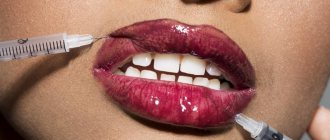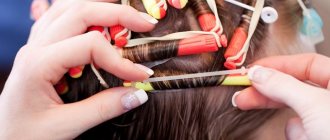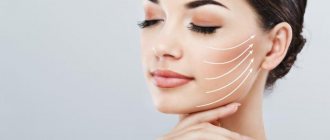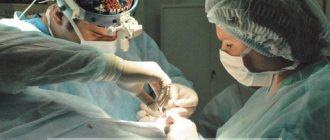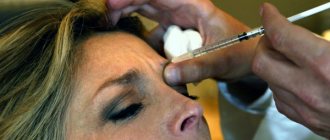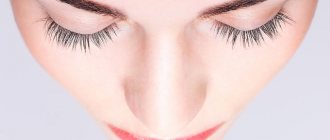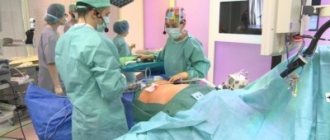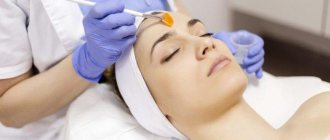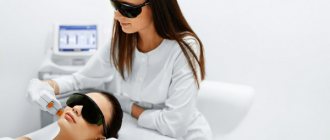The most important desire of a woman is to remain young as long as possible. What to do if a massage from a cosmetologist, expensive creams and masks no longer help you? Someone says that “you need to age naturally,” but this is not our method.
Is it too early and scary to decide on a full-fledged facelift surgery? Is the effect of Botox so short-lived? How to outsmart age and bring back beauty and attractiveness?
There is a method, the effect of which lasts in most cases until the end of life. This is lipofilling.
Fat grafting allows you to correct cosmetic facial defects using injections of your own fat. Lipofilling will help improve facial contours.
Up to what age can it be done: up to 65-70 years.
Fat grafting is not quite the operation we imagine it to be, because these are injections that can be performed under local anesthesia without resorting to anesthesia. And the procedure takes from 30 minutes to an hour. There is usually no pain after surgery either. And the result in most cases lasts until the end of life. It turns out that today this is the simplest and almost painless method to restore youth.
Benefits of the procedure:
- minimum risk:
During the procedure, it is not a foreign graft that is used, but the patient’s adipose tissue, which is not rejected by the body and does not cause allergic reactions. Even if some of the fat cells do not take root, they will be eliminated from the body without any health consequences; - natural result:
After the procedure, regardless of which area of the face the procedure is performed on (eyelids, cheekbones and cheeks, chin or all problem areas), the “tweaked” area will look as natural as possible; - long-lasting effect:
Unlike a number of other cosmetic procedures that require periodic correction, the results of volumetric modeling last for many years; - quick recovery:
The procedure does not require general anesthesia. All manipulations in the temporal region, cheekbones and cheeks, eyelids and chin are performed under local anesthesia. The procedure is low-traumatic, well tolerated and does not require long-term rehabilitation; - Deep skin rejuvenation:
Adipose tissue is rich in stem cells. After the procedure, metabolic processes are activated, as a result of which local blood flow improves, the number of facial wrinkles decreases, skin turgor increases, and the face looks healthy and fresh.
Correction zones
- Lips. Procedures to enlarge and reshape lips are now at the peak of popularity. However, correction with gels has to be repeated constantly, but lipofilling will only need to be done once. This is especially true if you do not want to increase the volume of your lips, but would not mind returning them to their former juiciness.
- Dark circles under the eyes. “Dips” and dark circles under the eyes are usually difficult to correct, but lipofilling easily copes with this task: in addition to replenishing volume, fat transfer leads to a noticeable improvement in the quality of the skin.
- Cheeks and cheekbones. The drooping of the tissues of the middle zone of the face leads to the appearance of jowls and deep nasolabial folds, blurring the contours of the lower jaw. To return a clear contour to the oval of the face, you will need to uniformly inject fat into the recessed areas.
Point injections smooth out nasolabial folds, nasolacrimal depressions, “dips” in the cheekbones and temples, create a gentle oval on thin, pointed faces, and improve the relief of the neck and décolleté. Lipofilling is absolutely indispensable for rejuvenating the hands when you need to smooth out protruding veins and tendons.
Contraindications to the procedure:
- chronic diseases in the acute stage;
- acute diseases of viral and infectious etiology;
- oncological diseases;
- diabetes mellitus type I and II, other endocrine disorders;
- connective tissue pathologies,
- disorders of the blood clotting system,
- lack of sufficient adipose tissue in the patient.
Please make an appointment for a medical consultation in advance and provide the doctor with truthful and as detailed information as possible about your medical condition. This will not only avoid possible complications, but will also increase the effectiveness of the procedure.
Lipofilling of nasolabial folds
Nasolabial folds that are too pronounced or very deep bring a lot of disappointment to their owners, however, this is an area that lends itself well to correction using both cosmetic and surgical methods.
Often, when asking the question about the need to correct the nasolabial fold, the patient implies the need to smooth it out by filling it.
It is believed that when correcting this zone, it is necessary to level the level of the fold itself to the level of the adjacent tissues. But you need to understand that the nasolabial fold is not always formed as a result of tissue creases and has its own natural depression. Sometimes its origin, on the contrary, is associated with overhanging tissue as a result of drooping subcutaneous fat, resulting in the formation of a so-called roller located just above the nasolabial fold and aggravating its depth and size.
With the help of lipofilling, you can achieve two goals simultaneously: remove fat accumulations from problem areas of the body and fill the areas that need volume with the resulting fat tissue. You can increase the volume of your breasts by receiving a thin waist as a gift, give a rounded and seductive shape to your buttocks, and eliminate the problem of curvature of your legs.
Insufficient volumes and imperfect proportions of the buttocks cause a lot of grief to their owners and serve as an object for constant improvement. There are 4 types of buttock shapes: A-shaped, V-shaped, round and square. For each of them, you can identify areas that require correction: the so-called “ears”, “dimples”, sagging areas, asymmetry, “smoothness”. The fat grafting technique, as lipofilling of the buttocks is also called, allows you to safely enlarge this part of the body and give it an ideal shape by introducing your own fat into the tissue. After analyzing all the nuances of the shape, plastic surgeons determine the correct tactics for fat transplantation. The result of the work is beautiful, proportionally developed, elastic and toned buttocks.
The volume and shape of the legs are determined by the thickness of the bones, muscle development, and the amount of fatty tissue. When determining the parameters of ideal legs, the “three windows” principle is used, when legs placed together should form 3 spindle-shaped defects: between the ankles and calves, between the calves and knees, between the knee joints and the upper third of the thigh. The shape of the legs is corrected through fat tissue transplantation - the introduction of prepared fat material into certain areas effectively eliminates the problem of curvature: deficiency of muscle and fat tissue in the perineal area; excessively thin, closed knee joints; obvious insufficiency of the soft tissue mass in the upper third of the leg and ankles.
Lipofilling can solve many problems with restoring the shape and volume of the breast. The procedure improves the appearance of breasts with noticeable asymmetry. To correct the shape of the mammary glands lost after pregnancy and lactation, fat injections are injected into the subcutaneous or intermuscular space without affecting the gland itself. By injecting adipose tissue, you can achieve breast enlargement by 0.5-1 size. For greater mammary gland enlargement, lipofilling is not only not recommended, but also dangerous, since after a certain period of time the transplanted fat cells can be distributed unevenly and even turn into unsightly scar tissue. To increase breast volume, a large amount of fat is required, which gradually takes root. The growth of blood vessels and capillaries into it requires a certain time, and its own tissue cannot function for a long time without appropriate nutrition. When enlarging the mammary glands with implants, the lipofilling technique is used to hide the edges of the artificial material. Very often lipofilling is used in the case of reduction mammoplasty.
List of necessary tests
Procedures on certain areas of the face are performed under local anesthesia. So that the doctor can predict the result as accurately as possible and assess the condition of your body, you will need to undergo the following tests:
- general clinical blood test (complete + platelets);
- coagulogram (blood clotting time, bleeding time, INR, prothrombin index, fibrinogen, APTT);
- blood sugar (glucose) test;
- examinations for hepatitis B, hepatitis C, HIV, syphilis
*To assess the condition of the body and outline the optimal amount of correction, the doctor can individually prescribe an extended list of studies for you.
Possible complications
Complications occur very rarely. Individual characteristics of the body, which cannot be predicted, are usually their cause. Possible unprofessionalism of the surgeon can also play a role, so you need to contact a well-established clinic.
A doctor with low qualifications may take donor cells poorly, damage them or take a small amount, and also use an unsterile instrument. This may cause:
- accumulation of lymph or granulomas under the skin;
- inflammation, swelling, pain;
- tissue damage;
- sensory disturbance;
- allergic reactions;
- disappearance of the effect of the procedure.
The appearance of any sign is a serious reason for a new visit to the doctor.
Stages of the procedure
Volume modeling of the face using your own fat is carried out according to an approved medical protocol, which includes 3 stages: sampling of fat cells, cleaning the donor tissue and introducing it into the problem area.
- The doctor selects a donor area and manually removes fat tissue through a thin cannula with a blunt tip. The puncture size is about 3 mm; no hematomas are formed during fat sampling; the subcutaneous vessels maintain their integrity.
- Only intact, well-cleaned cells with high survival rates are suitable for the procedure. Therefore, adipose tissue must be cleaned and washed with special solutions.
- The introduction of purified donor tissue into the problem area is carried out by injection. 2-3 mm punctures are made in natural skin folds or hair growth areas. To perform the procedure, a special thin cannula is used, which allows the dosage of the injected filler to be calculated as accurately as possible. By evenly distributing fat cells, you can achieve impressive long-lasting results.
What percentage of fat survives after lipofilling?
Even 10 years ago, at plastic surgery conferences there were very active discussions about the percentage of fat engraftment: one part of the surgeons claimed that the engraftment rate was about 10-20%, the second - about 50%, the third - up to 70%. And each of them was actually right. The problem was that each doctor’s method of collecting and injecting fat was different.
Fat grafting seems to be a fairly simple plastic surgery at first glance, but in fact the fat transfer process has a lot of nuances, which subsequently affect the percentage of engrafted fat:
- Incorrect fat intake. If you introduce too much solution at the liposuction stage (which makes fat collection easier and bleeds less), then the percentage of fat cells per ml of the injected component will be much less, and accordingly the engraftment result will be worse.
- Using a centrifuge after fat collection. Nowadays, the use of a centrifuge is not recommended, since it separates fat cells (adipocytes) from stem cells, which end up at the bottom along with the solution and then merge, which also leads to a lower percentage of engraftment.
- After collecting the fat and placing it in a container, it is extremely important to stir it! If this is not done, the fat is divided into fractions and quickly, literally in 2 minutes it is already fragmented: at the top - oil, in the middle - fat cells, at the bottom - blood. For example, if a nurse who gives a ready-filled syringe to the doctor took one portion from the bottom, where there will be blood, and took the second portion from the middle, where there are a lot of fat cells, then naturally the result after administering the 1st portion will be almost unnoticeable.
- Bolus administration. If you inject fat with a thick cannula, as a bolus, you will get a large ball and naturally there will be a large percentage of fat cells that simply do not contact living tissue and therefore cannot take root. Fat needs to be injected in micro portions, and even with a thin cannula; this is very painstaking work. A thin millimeter cannula makes microchannels and with each pass we introduce no more than 1/20 of one cube. Imagine the difference of 1/20 of a cube or 10 cubes at once with a bolus injection. Doctors often sin with bolus injection, who perform several operations in one cut (for example, rhinoplasty + liposculpture) in order to save time. refilling the area under the eyes, cheeks and cheekbones
Rehabilitation period:
- To prevent complications, antibacterial strips are applied to the sites where adipose tissue is collected and where cells are introduced into problem areas. When correcting large volumes, the doctor may recommend a hospital stay for 24 hours, but most patients return home within a few hours.
- Swelling and local hematomas may remain at the puncture sites for 3-6 days. To quickly eliminate these defects, take medications prescribed by your doctor and follow the recommended regimen.
- To speed up the survival of fat cells and maintain the results of the procedure for a long time, limit physical activity for 2-3 weeks and avoid exposure to high temperatures (bath, hot tub, sauna). You can take a shower. The result can be assessed 30 days after the operation.
The Medial Clinic offers favorable prices for volume modeling using your own adipose tissue: the cost of correcting one zone is 20,000 rubles. (excluding discounts and special promotional offers).
How long does the result last?
The duration of the effect after lipofilling depends on many factors. These include the area of influence, the quality of the procedure performed and the individual characteristics of the body.
If you follow all the specialist’s recommendations after lipofilling, the result lasts on average from 4 to 6 years. In the first year, a loss of 30% of the administered lipofiller is acceptable, and in subsequent years no more than 20%.
The main advantage of lipofilling is the rejuvenation effect, which gives the face natural volume.
